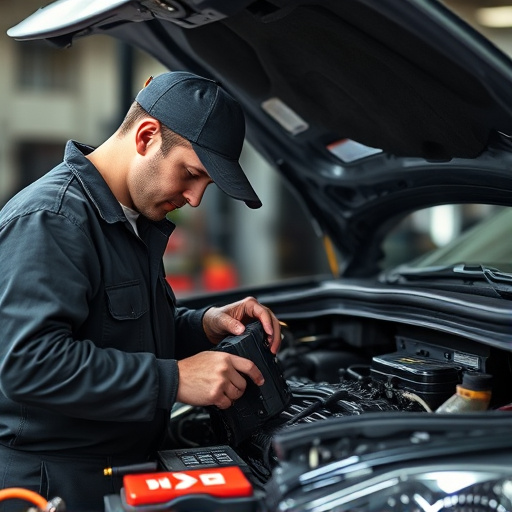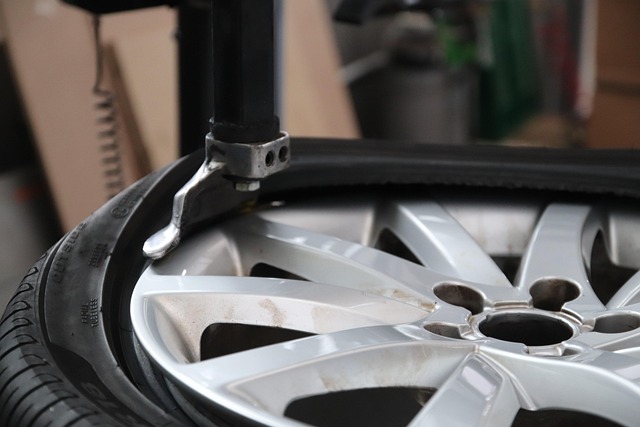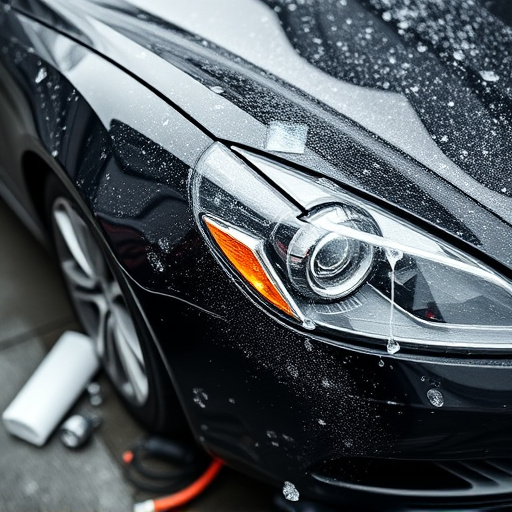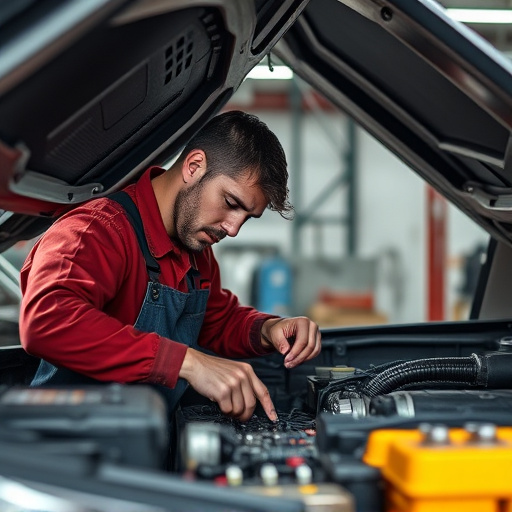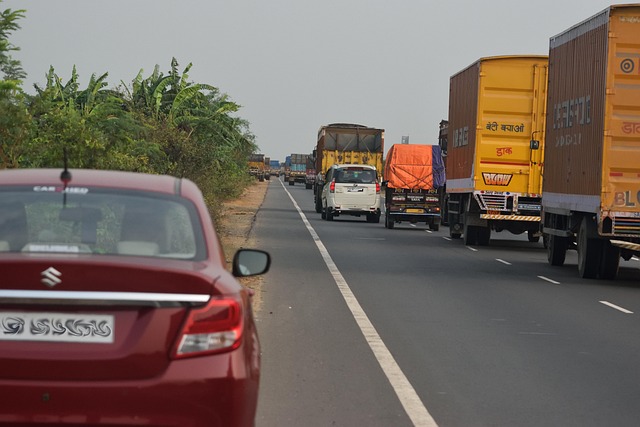Tesla Drive Unit inspections are crucial for maintaining electric vehicle safety and performance, addressing issues like unresponsive acceleration caused by faulty sensors, wiring, or installations. Specialized technicians perform thorough visual and diagnostic checks, testing components under various conditions to ensure optimal functionality. Regular inspections prevent severe auto bodywork problems and preserve the vehicle's handling and speed. For reliable service, visit a reputable collision repair shop specializing in Tesla drive unit inspections.
Experiencing unresponsive acceleration in your Tesla? A thorough inspection of the drive unit could be the solution. This guide delves into the intricacies of Tesla’s advanced propulsion system, focusing on identifying and addressing issues with the drive unit. By understanding how these units work, you’ll learn to recognize symptoms of malfunction and follow a step-by-step process for inspection, empowering you to maintain optimal vehicle performance. Master the art of Tesla drive unit maintenance with this comprehensive overview.
- Understanding Tesla Drive Units and Their Functionality
- Identifying Unresponsive Acceleration Issues
- Step-by-Step Guide to Conducting a Drive Unit Inspection
Understanding Tesla Drive Units and Their Functionality

Tesla Drive Units are at the heart of their electric vehicles’ performance and handling. These advanced systems control acceleration, braking, and steering, integrating with the car’s battery pack to deliver smooth, efficient power delivery. Comprised of intricate electronics and software, they’re designed for precision and responsiveness. Any issues, such as unresponsive acceleration, could point to a problem within the drive unit itself or its connections.
Regular Tesla drive unit inspections are crucial for maintaining optimal performance. This involves meticulously examining components like sensors, wiring harnesses, and power modules. Technicians with specialized knowledge and tools perform these checks, looking for signs of damage, corrosion, or misalignment—similar to how a mechanic inspects a car’s engine. Issues detected early can prevent more serious auto bodywork problems, including frame straightening, and ensure the vehicle continues to operate smoothly and safely.
Identifying Unresponsive Acceleration Issues
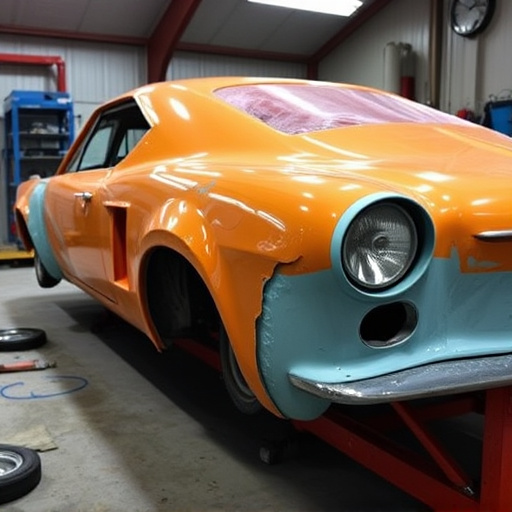
Unresponsive acceleration issues in Tesla vehicles can manifest in various ways, from a lack of response when pressing the accelerator to an unusually slow increase in speed. These problems may be caused by faulty wiring or components within the vehicle’s complex electrical system, particularly focusing on the Tesla drive unit. During a Tesla drive unit inspection, technicians look for signs of damage or misalignment, as even slight issues can hinder the vehicle’s performance. For instance, a damaged or improperly installed sensor could send inaccurate data to the drive unit, resulting in inconsistent acceleration.
If you’ve noticed your Tesla struggling to accelerate or exhibiting unpredictable behavior under heavy foot, it might be time to visit a reputable collision repair shop for a thorough inspection. Skilled mechanics will employ advanced diagnostic tools and their expertise to pinpoint the root cause, whether it’s related to the drive unit itself, a faulty bumper repair, or other components that affect overall vehicle performance. In some cases, frame straightening might be required to ensure proper alignment, especially after a collision, which could also impact acceleration.
Step-by-Step Guide to Conducting a Drive Unit Inspection

Conducting a Tesla Drive Unit Inspection for Unresponsive Acceleration is a meticulous process that requires attention to detail. Here’s a step-by-step guide for identifying potential issues within the drive unit, crucial for addressing unresponsive acceleration problems.
1. Safety First: Begin by ensuring the vehicle is parked on a level surface and engage Park mode. Disconnect any external power sources to avoid short circuits during inspection. Safety is paramount when dealing with electric vehicles like Tesla.
2. Visual Inspection: Examine the drive unit for visible signs of damage, corrosion, or loose connections. Check for any unusual wear patterns or leaks that could indicate previous repairs or accidents (similar to those considered in auto painting and vehicle restoration processes). Look for components that appear replaced or show signs of stress.
3. Connect Diagnostic Tools: Utilize a compatible diagnostic scanner to connect with the Tesla’s onboard computer. This tool will allow you to retrieve error codes and access real-time data from various sensors, providing insights into potential issues within the drive unit.
4. Perform Testing: Initiate a cold start and let the vehicle operate at normal operating temperatures. Monitor sensor readings, voltage levels, and current draw during acceleration events. Observe if the acceleration responds as expected or remains unresponsive. Repeat tests under varying conditions to gather consistent data.
5. Check Components: Examine critical components such as motor windings, power electronics modules, and sensors for functionality. Test each component individually using diagnostic tools to pinpoint faulty areas. This meticulous process is akin to car collision repair, where identifying the root cause is key to effective solutions.
6. Analyze Data: Compare test results against known operational parameters and Tesla’s specifications. Identify anomalies in sensor readings, voltage drops, or current fluctuations that could indicate problems with wiring, connections, or internal components.
When dealing with unresponsive acceleration issues in Tesla vehicles, conducting a thorough Tesla drive unit inspection is key. By understanding the functionality of these complex systems and following a systematic guide, owners can identify and resolve problems effectively. This process empowers vehicle enthusiasts to maintain their Tesla’s performance and ensures a smoother driving experience. Remember, a well-inspected drive unit can be a game-changer in diagnosing and addressing acceleration-related challenges.
